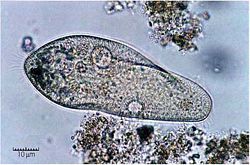Disposing of secondary sludge (biosludge) in the recovery boiler

Hydrolyzing secondary sludge (biosludge) and mixing it with the black liquor prior to the concentrator to allow its incineration in the recovery boiler has proven successful in Europe as a means of disposal for secondary sludge. This method offers benefits compared to the more traditional methods such as landfill (now banned in Europe for biomass material), composting and land spreading (odors, costly treatment and public opposition) or incineration in the power boiler (loss of thermal efficiency / steam generation, combustion stability problems, corrosion and air emissions).
No significant negative impacts have been experienced in mills that have adopted incineration of the secondary sludge in the recovery boiler. Hydrolysis of the secondary sludge prior to its introduction in the evaporators, ahead of the concentrator, is required in order to destroy the membrane of the microorganisms and allow for the internal water to be removed.
Control of non-process elements (NPE) in the liquor cycle is an important consideration for mills that consider implementing this method and mill balances that can evaluate the changes in NPE in the liquor cycle resulting from the addition of the secondary sludge to the black liquor need to be conducted to determine what methods, if any, need to be implemented to maintain an acceptable level of NPE in the mill liquor cycle.
Learn more about disposal of secondary sludge in the recovery boiler
A Valmet white paper, available HERE, provides an overview of the secondary sludge hydrolysis process, why it is required to prevent scaling in the evaporators and how it is introduced into the black liquor. It reviews the benefits that can be achieved by hydrolyzing and disposing of the sludge in the recovery boiler as opposed to landfilling or incineration in the power boiler and discusses the impact of NPE that can be present in the secondary sludge. It also discusses the experience of several mills that have elected to use this method for disposal of the secondary sludge, where no significant negative impacts have been experienced in mills that have adopted incineration of the secondary sludge in the recovery boiler, as well as the means used to control the NPE in the liquor cycle. Additionally, Valmet Automation products for wastewater handling are described in the related links.
Download and read the white paper and give your Valmet representative a call to discuss improving your handling and disposal of secondary sludge.